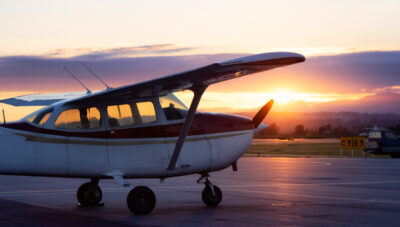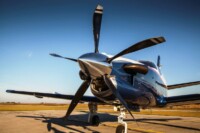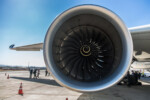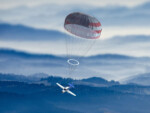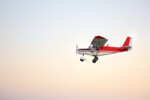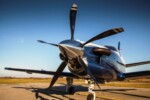The 8 Types of Aircraft Wings and How They Differ
20 June 2022 | Updated on February 05, 2024
Aircraft wings are airfoils that generate lift by moving air over them, allowing a plane to get airborne safely. They are an aircraft’s most crucial component and perform additional functions like holding airplane fuel. Airplane wing construction consists of strong and rigid materials, typically large and heavy structures, to support the weight of an aircraft.
Airplane manufacturers used external wing bracing on early planes to reduce the wing’s weight. Modern aircraft have internal structural attachments built into the fuselage and the wings to support their weight and help bear the aircraft’s aerodynamic and landing loads.
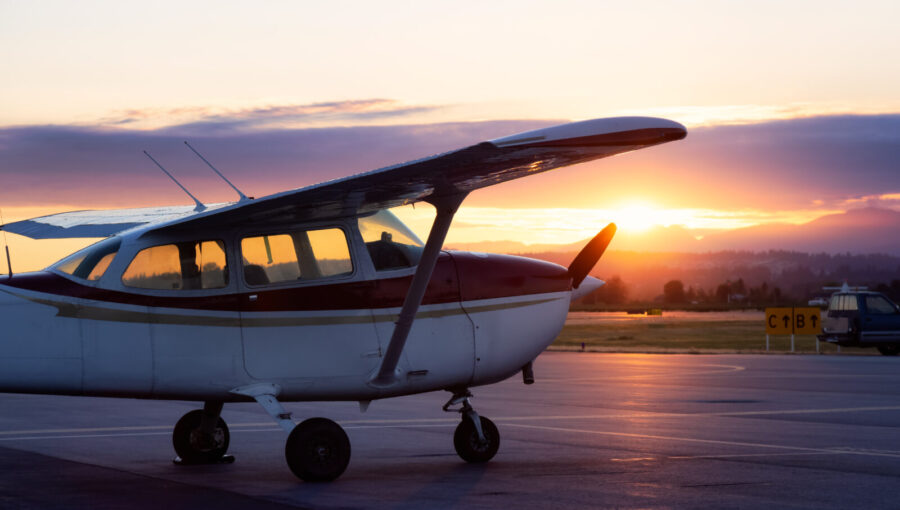

Aircraft designers have developed different types of aircraft wings over the years with varying degrees of success. Today, there are around thirty-five types of aircraft wings encompassing different configurations and shapes. You may be able to identify the difference between certain types of aircraft wings quickly. For example, the wings on a Supermarine Spitfire fighter plane from World War 2 are vastly different from those on a Eurofighter Typhoon fighter. However, the distinction between certain types of aircraft wings isn’t easily distinguishable.
This article identifies the different types of aircraft wings and explains the standard wing configurations and shapes you may find on airplanes.
Wing Structure
The wings on early airplanes were made from wood and covered with fabric, and it wasn’t until World War 2 that aluminum and magnesium alloy wings became widespread. The wing skin on modern airplane wings has either aviation-grade aluminum or carbon fiber construction, providing maximum tensile strength during extreme flight conditions.
Aircraft wings consist of two parts, namely, the exterior surface known as the skin and the internal wing. The skin shares part of the wing load stress during flight, shifting the aircraft’s load stress to the inner wing ribs.
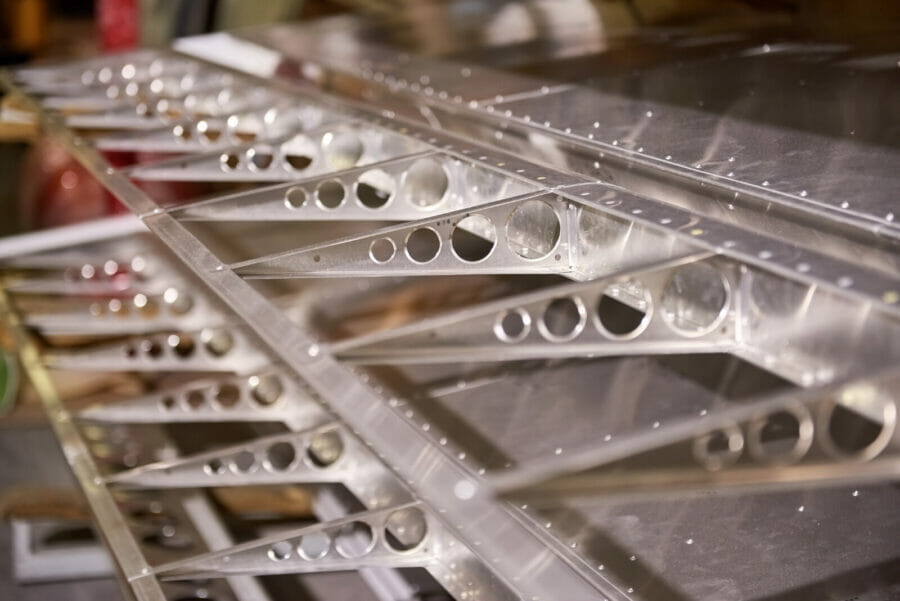

The internal wing structure consists of stringers and spars that run spanwise and bulkheads or formers and ribs that run from the leading edge to the trailing edge. The most critical structural internal wing components are the spars. They bear the brunt of concentrated weights and distributed loads of the aircraft’s parts and systems, such as the fuselage, engines, and landing gear.
Most modern aircraft wings have a self-supporting cantilever design and do not require external supports or bracing to stay attached to the plane. The entire wing’s internal structural members and supports are installed inside the airfoil to provide better aesthetics and low drag. However, some (smaller and lighter) airplanes have external steel struts and wires supporting the wings.
Wing configuration
A fixed-wing aircraft wing configuration is the arrangement of its lifting and related surfaces. Aviation engineers classify wing configurations by mounting position and style. You can quickly fathom some aircraft wing configurations by their names. There are seven standard aircraft wing configurations, each type providing different flight characteristics.
- Low wing configuration – means the wings are mounted on the lower half of the plane fuselage near the bottom and is a common feature of modern passenger aircraft. Low wing configuration provides pilots with excellent all-round visibility and allows the plane to respond faster to pilot control inputs, thus improving handling and maneuverability.
- Mid-wing configuration – these types of aircraft wings are mounted halfway between the top and bottom of the fuselage. The design is rarely seen on commercial airplanes because its support bracing goes directly through the mid-cabin, taking up space. A mid-wing configuration allows for a more balanced and stable aircraft during a flight than a low-wing configuration. However, it offers poor maneuverability and control response.
- High-wing configuration – is a type of aircraft wing commonly seen on large cargo and military transport aircraft. The wings are mounted high on the top of the fuselage, allowing the airplane cabin to be located closer to the ground for easier cargo handling. A significant advantage of high-wing configuration is that the wing-mounted engines have generous ground clearance making the aircraft suitable for operations in unpaved or gravel runways.
- Dihedral wing configuration – is one of the more complex wing configurations on a fixed-wing aircraft where the wings have an upward angle from the fuselage. The wing is typically mounted low on the fuselage but angled upwards, resulting in a higher wingtip than the horizontal wing base. The dihedral wing configuration increases the aircraft’s stability during flight and maneuvering. It also allows smaller airplanes to level out faster after a rapid and steep angle takeoff.
- Anhedral wing configuration – is also known as negative dihedral angle and is the opposite of dihedral angle wing configuration. In this instance, the aircraft wings point downwards from its mounting base. It is common on aircraft with a high wing configuration, and the wings have a downwards angle from the horizontal wing base to the wingtips. Aerospace engineers use an anhedral wing setup to reduce airplane stability when the aircraft is prone to excessive lateral stability.
- Gull-wing configuration – is also known as Pulaski wings and drives its name from a seabird with similar wing characteristics. Here, the wing incorporates a dihedral wing design from the horizontal base, which is reduced or completely flattens after a short distance. Gull-wing configuration ensures excellent engine ground clearance and pilot visibility.
- Inverted gull-wing configuration – is the opposite of gull-wing configuration. Here, the inboard wing is mounted at an anhedral angle, with the outer wing section shapely pointing at an upwards angle resulting in higher wingtips than the horizontal wing base. It is an unusual design commonly found on single-engine piston fighter planes. A significant advantage of the inverted gull-wing configuration is it allows for a shorter undercarriage which improves the overall wing space.


Types of aircraft wings
Aviation experts categorize airplane wings based on their shape and design. There are eight common types of aircraft wings, and we will explain them in detail.
1. Rectangular wing
This is a basic and easy-to-produce type of aircraft wing that sticks out from an airplane frame at a right angle. Manufacturers often use rectangular wings on small airplanes, and you can easily discern one by its straight edges and non-tapered outline. A primary advantage of a rectangular wing is its easy construction. However, rectangular wings are aerodynamically ineffective, and airplane manufacturers do not fit them on airplanes anymore. This is primarily due to its broad design, which creates larger wingtip vortices and downwash generating insufficient lift.
An example of an airplane using a rectangular wing is the Piper PA-38.
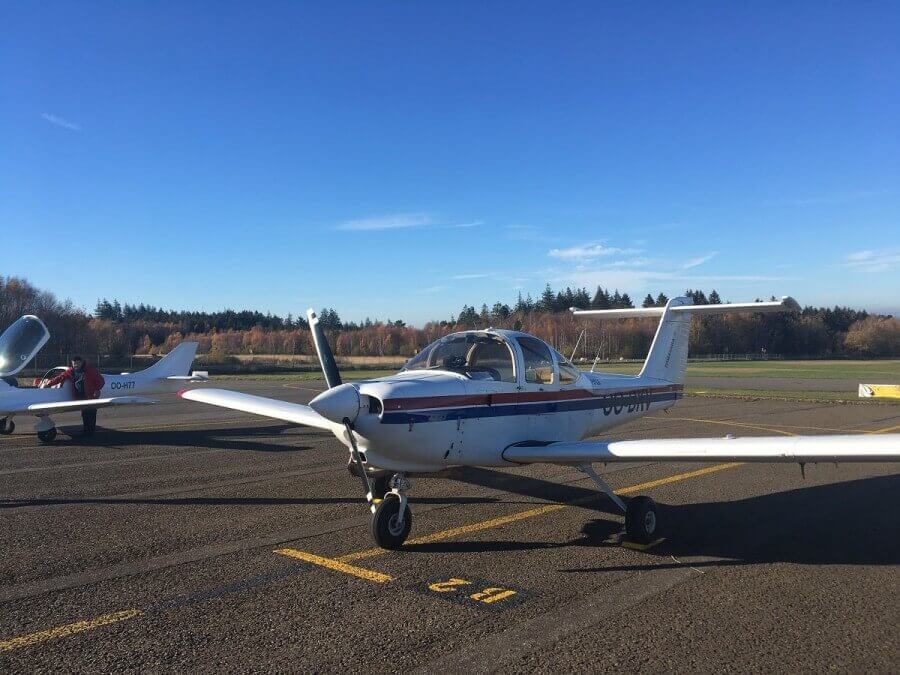

2. Straight tapered wing
A modified rectangular wing where the wing’s chord varies continuously across the wing span, with a change in the depth of the airfoil. The straight tapered wing type of aircraft wing is more aerodynamically efficient than a rectangular wing because the decrease in the chord length across the wing reduces drag at high speeds providing extra lift. Although slightly more challenging to build than a rectangular wing, the straight tapered wing design offers an excellent trade-off between aerodynamic efficiency and production complexity.
An example of an airplane using a straight tapered wing is the North American P-51 Mustang.
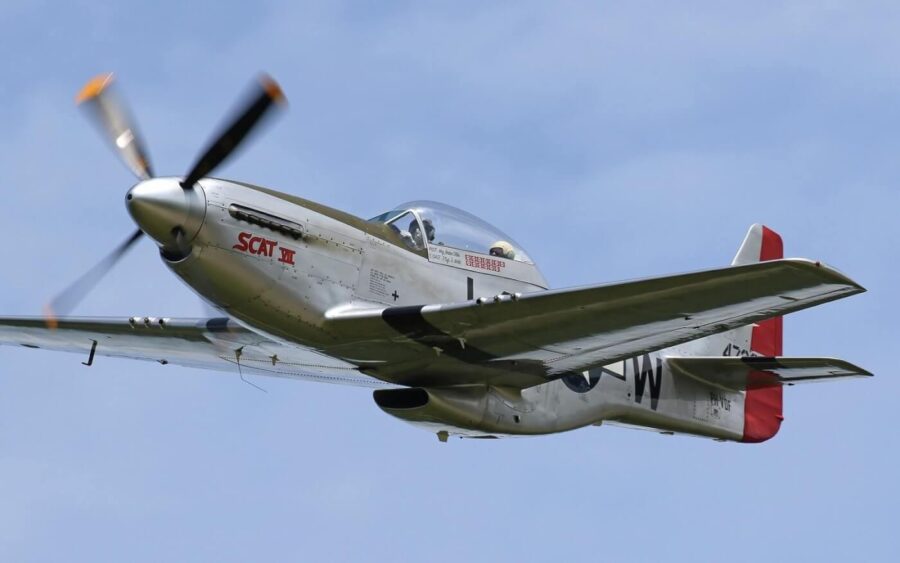

3. Elliptical wing
The elliptical wing is one of the most aerodynamically efficient types of aircraft wings on a production airplane. Its leading and trailing edges consist of two equal parts of an ellipse providing elliptical spanwise lift distribution across the wings to create the lowest drag forces possible during the flight. The elliptical wing thin structure was initially conceived to house ammunition, cannons, and landing gear. However, its highly efficient aerodynamic wing curvature provides excellent lift distribution forcing aircraft designers to adopt elliptical wings as a standard wing design feature on several aircraft. Elliptical wings are challenging to produce, which is why they are longer used on airplanes. Their design also hides a significant flaw that can cause the entire wing section to stall simultaneously, with the pilot losing control of his aircraft without warning.
Examples of airplanes using elliptical wings include the British Supermarine Spitfire and the Heinkel He 70 “Blitz”.
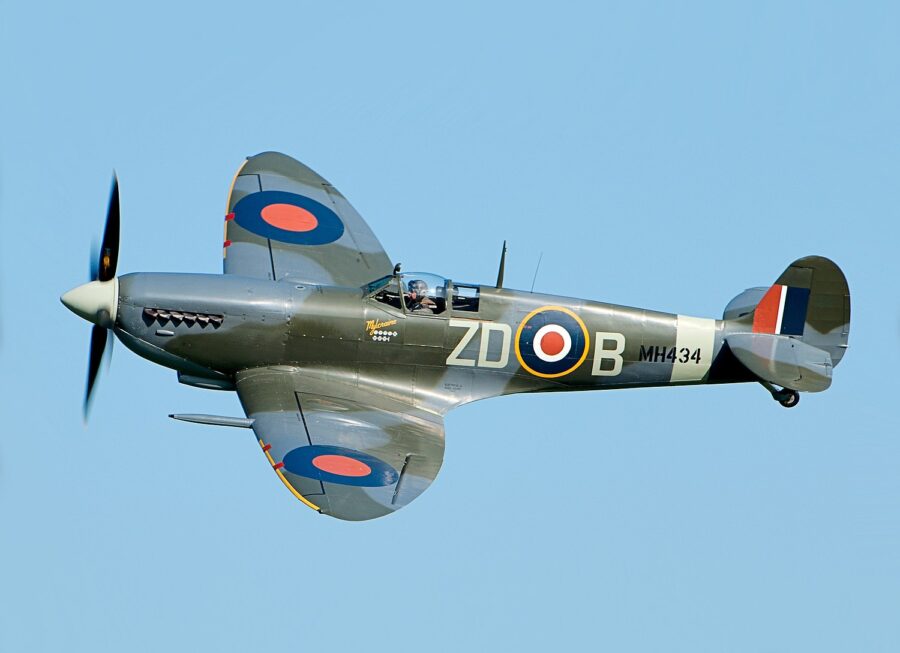

4. Delta wing
A low-aspect-ratio wing suitable for supersonic and high-speed subsonic aircraft. It has a long root chord and a minimal structure outboard for a structurally efficient aerodynamic performance, increased maneuverability, and reduced wing loading. The delta type of aircraft wing provides greater lift than a swept wing of similar lifting ability, plus they are stronger, lighter, and stiffer.
Delta types of aircraft wings are inexpensive to produce and maintain. And its design provides a deeper structure for storing fuel without encountering significant drag resistance. However, a delta wing needs a high angle of attack to sustain lift during low speeds (typically landing and takeoff), and their low aspect ratio induces drag.
There are several variants of the delta wing offering better flight and handling characteristics. These include:
- Double delta: is also known as compound delta or cranked arrow. This type of aircraft wing configuration features an uneven leading edge with two sharp angles and a prominent sweepback at its inboard section, creating a stable high-lift vortex without using a foreplane. Excellent examples of aircraft with double delta type wing configuration include the Swedish SAAB Draken and the prototype General Dynamics F-16XL.
- Canard delta: is an aircraft wing configuration with a tiny forewing ahead of the main delta wing. Examples include the Eurofighter Typhoon, the French Dassault Rafale fighter jet, and the Swedish SAAB JAS 39 Gripen.
- Tailed delta: this configuration includes a conventional tailplane for improved handling characteristics, offering the main delta wing optimum lift capabilities. A good example is the MiG-21 fighter jet.
- Cropped delta: this configuration involves cutting off the wingtip of a conventional delta wing to maintain lift on outboard wing surfaces and reduce stalls at high angles of attack.
- Ogee delta: also known as ogival delta, is a modified delta wing optimized for greater aerodynamic efficiency during low speeds. It is similar to a compound delta but with a smooth leading edge curvature (ogee curve) merging into a cropped wingtip. A perfect example is the ogival delta wing on the Anglo-French Concorde.
- Tailless delta: is a delta wing configuration using the movement of the wing’s trailing edge to control the angle of attack. This configuration is exceptionally lightweight while offering structural simplicity and excellent low aerodynamic drag. Examples of aircraft with the tailless delts setup include the Dassault Mirage III and SAAB 35 DRAKEN.
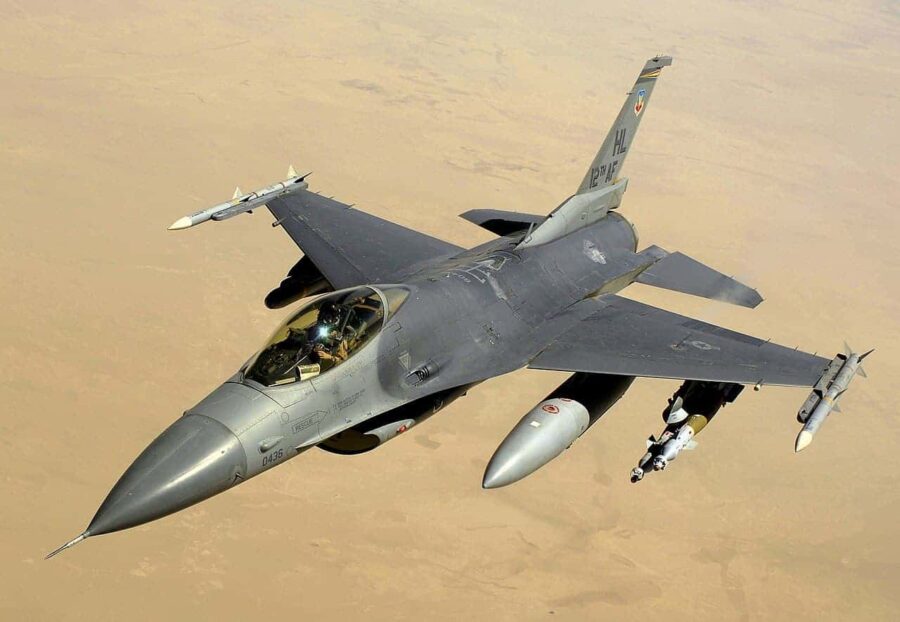

5. Swept-back wing
You are more likely to fly in an airplane with swept-back wings than the other types of aircraft wings. In a swept-back wing design, the wingtips are angled sharply backward from the mounting base. This wing type reduces drag during transonic speeds and provides aerodynamic efficiency for large commercial airliners.
An example of aircraft with swept-back wings is the Boeing 787 Dreamliner.
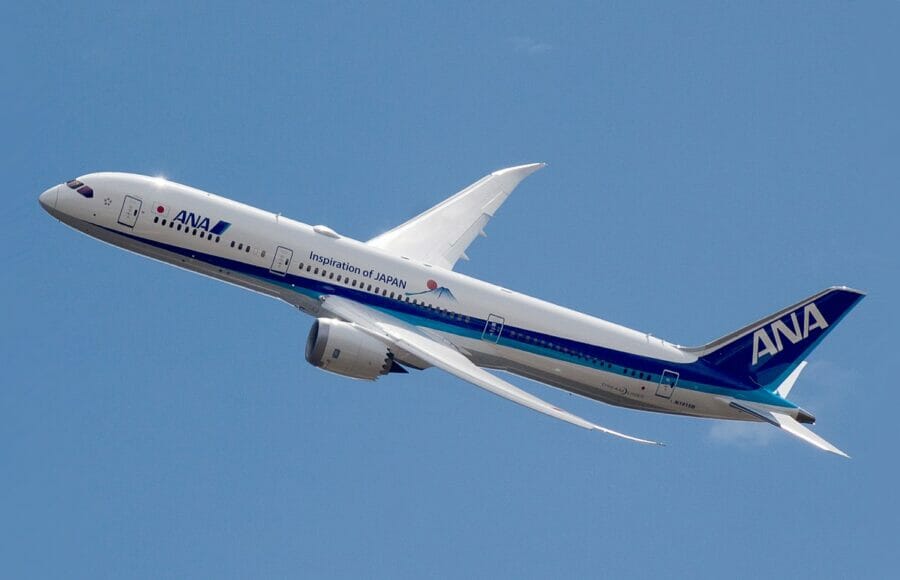

6. Forward-swept wings
This is a type of aircraft wing configuration in which the leading edge has a forward sweep and the quarter-chord line of the wing sweeps forward. Forward swept-wing design offers a high degree of maneuverability during subsonic flights with a higher lift-to-drag ratio. Additional benefits of forward-swept wings include improved stall resistance and anti-spin characteristics, high stability during a high angle of attack, low flight speeds, and short take-off and landing distance. A significant drawback is wing damage due to twisting as it bends under load stress.
Examples of aircraft with forward-swept wings include Grumman X-29 Switchblade and the Sukhoi Su-47 Berkut.


7. Trapezoidal wing
A trapezoidal wing configuration consists of a swept forward trailing edge with a swept-back leading-edge offering exceptionally low aerodynamic drag during high speeds. It often combines thin, low aspect ratio, short-span wings, which can be tapered or not, with durable construction, resulting in increased strength and stiffness.
Military airplanes use the trapezoidal wing type because it provides excellent handling at supersonic speeds and possesses good stealth attributes. A perfect example of an aircraft with a trapezoidal wing is the Lockheed Martin F-22 Raptor.
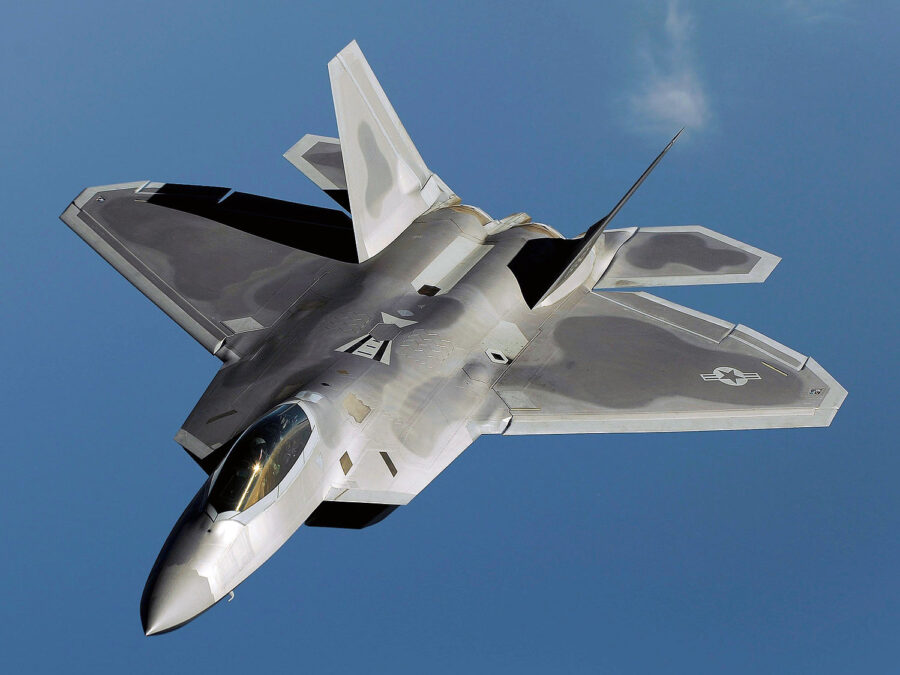

8. Variable-sweep wing
A Variable-sweep wing, also known as “swing-wing,” is a type of aircraft wing with a swept-back feature that can be returned to its initial position. Variable sweep wing configuration provides efficient aerodynamic performance during supersonic flight without sacrificing aircraft stability during low-speed flight periods. The drawback of a variable-sweep wing is its complex mechanical design requires long maintenance hours.
Examples of aircraft with a variable-sweep wing setup include the General Dynamics F-111 Aardvark, MiG-27, Tupolev Tu-22M, and the Panavia Tornado.
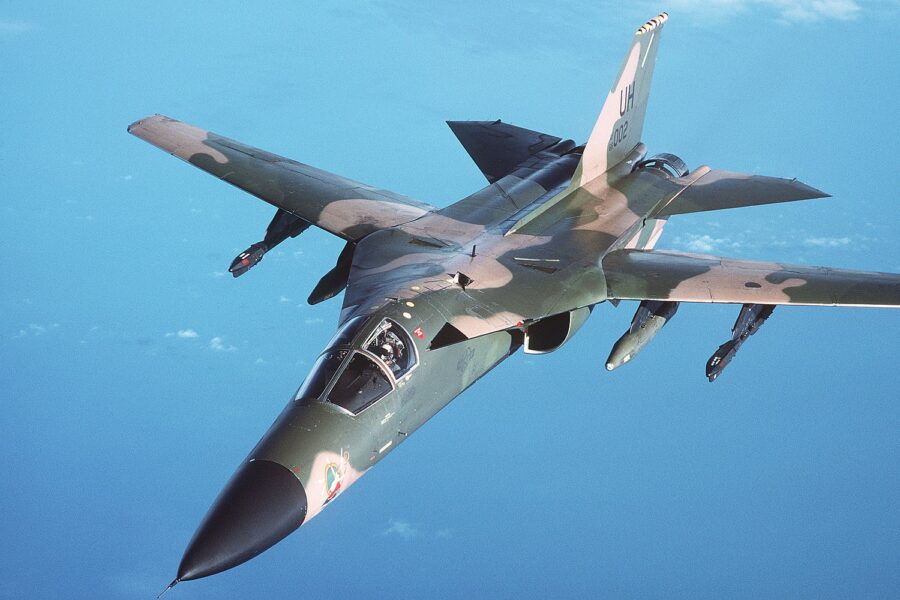

Conclusion
We bet you have a better understanding of the different types of aircraft wings, their benefits and disadvantages. Advancements in aeronautics technology mean that we will continue seeing more radical airplane wing designs in the future. Whether can prove as successful and replace the existing wing types is uncertain.




















